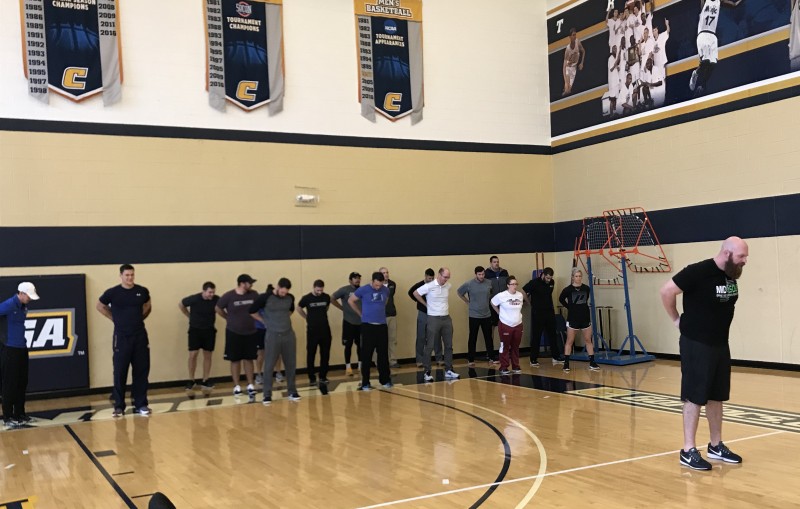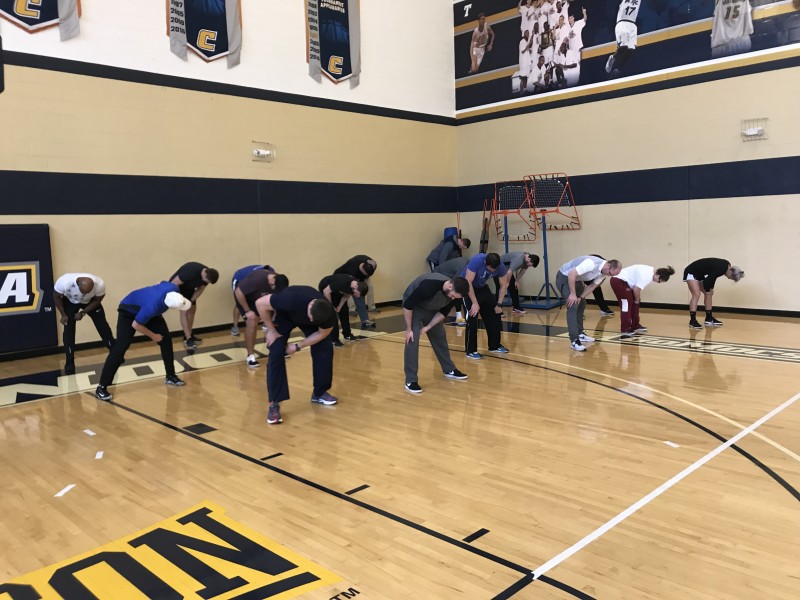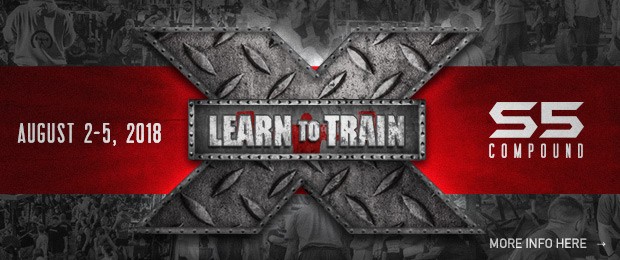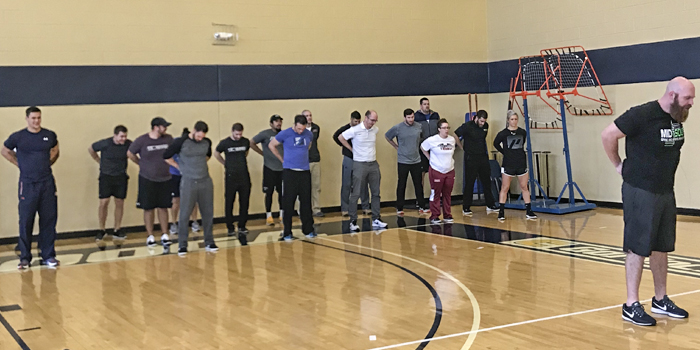
In only its second year of implementation, Reflexive Performance Reset (RPR) has become an invaluable tool for thousands of people across the world. I have seen its benefits for myself, the athletes that I care for, and in the countless other success stories RPR has provided around the globe. (Please note that for the purpose of this article that athlete, individual, and general population clients are essentially interchangeable.)
So what is it that makes RPR so special? Is it that RPR allows you to look at the body through the lens of the nervous system and understand why compensations occur? Nope. Is it the immediate response from the nervous system that allows the body to normalize function and unlock its true performance potential? Uh-uh. What about the fact that RPR is thorough enough to explain almost every soft tissue injury, yet simple enough to comprehend with a basic (1-2-3) concept of explosion versus implosion? We're getting closer.
RELATED: Back to Recovery Basics: Fundamentals of Recovery
Don’t get me wrong; these are all incredibly huge perks that RPR provides, but they aren’t the reason why RPR is so unique and special. RPR is special because it’s the only system in the world where the athletes can do the intervention on themselves. Let me repeat that: you can do RPR on yourself and see massive improvements in performance, injury prevention, and even basic physical and mental health without anyone else’s help. Obviously, someone has to teach you how to do RPR on yourself first, but the reason RPR is helping so many people is the fact that all its benefits are wrapped up into an easy-to-use, 10-minute, do-it-yourself package. The purpose of Reflexive Performance Reset is not to be another tool for the strength coach, medical professional, or fitness guru to hold hostage from their athletes or general public as the answers for all their problems. The true purpose of RPR is to be a tool that is put directly (and literally) into the hands of the athlete to provide massive benefits in performance and injury prevention.
To some, this may make a lot of sense, but to many, it probably seems confusing. Why is something simple enough that anyone can utilize it a good thing? After all, anything with that large of an effect on body must be so complex that you need to consult your health or fitness professionals every step of the way. Athletes looking to improve performance, injury resistance, and overall health shouldn’t be taking such an active role in the process, right? Don’t we need a team of professionals to do that for them?
The Practitioner-Based Model
Clearly there is a lot of confusion as to what the athlete’s role should be when it comes to taking care of their own body. This is because our current health care system, fitness industry, and athletes are all operating in a “practitioner-based” system. This is the system in which the individual has no active role in their health, fitness, or performance, and rather designates all responsibilities to some sort of professional, expert, or guru. The “who” is not important, as depending on the industry we can just insert whichever expert or professional that best fits (athletics uses a coach, health care uses a clinician, fitness uses a trainer, etc.). What is important is that in this practitioner-based system, the person who is responsible for the health of the athletes is the not athletes themselves.
This creates some problems. First, this means that most individuals will not seek help until they recognize the need for it. People tend to neglect giving enough attention to their body, performance, or state of health until it is taken from them and they are forced to face the music. Often, this tendency is written off and the individual is just labeled as someone who doesn’t care, but in reality, this theory doesn’t quite pan out. In reality, most people do not know or understanding the kind of impact they can have on their own health, and furthermore, that they have a duty to do just that. Instead, they are led to think that their body is too complicated to understand, and that when something bad happens the magic professional will ride in on their white horse and save the day. Unfortunately, this is not how the body works.
Second, the practitioner-based model has a huge scarcity problem. Let’s assume the practitioner is the only one wise enough to solve all your problems. Even if all the athlete/individual has to do is set up an appointment with a practitioner, or a visit with their strength coach between training sessions, there simply aren’t enough of these knowledgeable professionals available to help everyone. Remember, in the practitioner-based model, everything is managed and run through the expert to provide everything for the athlete. To clarify this, let’s use a pyramid chart to illustrate the practitioner-based system. In this chart, the surface area for each section identifies the (relative) volume of each population. As in any system, the base (bottom) identifies who is the foundation of the system and where responsibility lies in providing for the athlete’s needs.
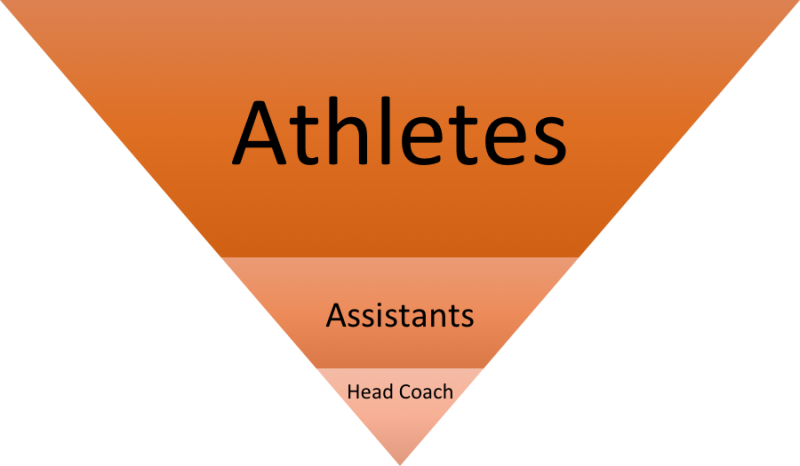 The practitioner-based model in a competitive athletics setting
The practitioner-based model in a competitive athletics setting
As you can see, there is such a disproportionately large amount of athletes and general population members that it would be virtually impossible to serve each one on an individual basis and be responsible for each individual’s well-being or performance. The result from this model is an overworked, overburdened system in which there is a huge scarcity problem and, instead of providing great goods and services, the practitioners and coaches are only given a small amount of time with each individual. It also underscores a dilemma that faces many practitioners in this model. Any attempt to increase quality requires time. This means either you provide better services for fewer people, or worse services for more people. This dichotomy almost always ends in the latter, leading to a decrease in quality of services, and a priority-based, rationed system. This type of system is very often reactive in nature and sacrifices long-term results for short-term results.
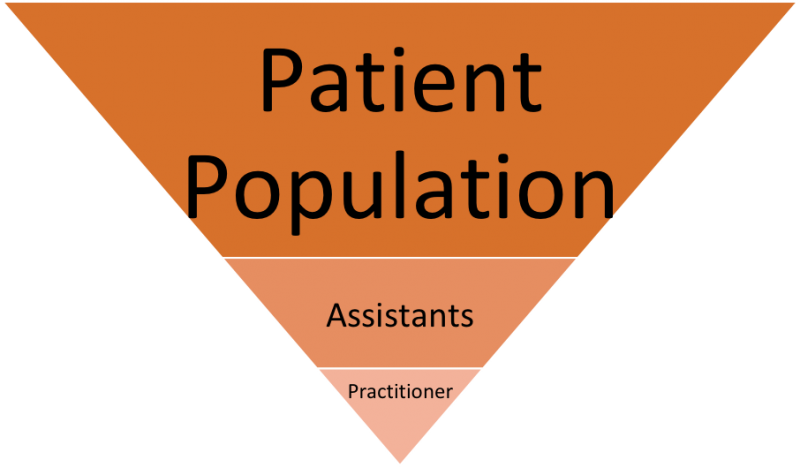 The practitioner-based model in the healthcare setting
The practitioner-based model in the healthcare setting
Shifting to the Athlete-Based Model
Whether you are a healthcare provider in the private healthcare system, a personal trainer in the fitness industry, or a strength coach working in a collegiate team setting, the above scenario may resonate a lot with you and with the struggles you currently battle in regard to time and quality. How can you give everyone a high-quality service without having to spend a gigantic portion of your time with each person? The answer: by flipping the equation and placing tools in the hands of your clients, athletes, and patients. Welcome to the athlete-based model.
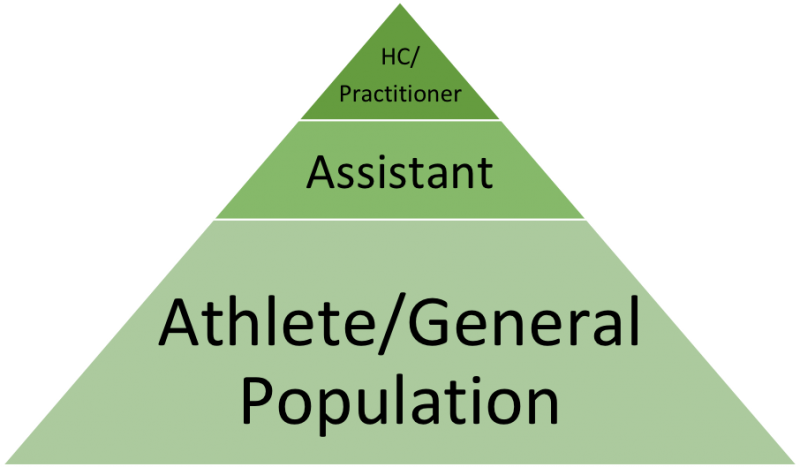 The athlete-based model emphasizes the athlete as the foundational base of their own health and performance. This change produces a more proactive and injury resistant athlete while also providing a solution for the over-burdened professional of the practitioner-based model.
The athlete-based model emphasizes the athlete as the foundational base of their own health and performance. This change produces a more proactive and injury resistant athlete while also providing a solution for the over-burdened professional of the practitioner-based model.
The athlete-based model is centered around placing athletes in a position to have a foundational role in ensuring their health, longevity, and performance. Now, this doesn’t mean that it’s up to every athlete to figure it out on their own. Systemically, this is means that the practitioner spends time early on to teach the athlete their role and put the correct tools in the hands of the athlete to allow them to make a drastic impact in their body.
The RPR Wake-Up Drills are simple and easy to learn. Once learned, this tool can be used anywhere and anytime by the athlete.
The beauty of the athlete-based system is that it actually makes everyone better. Not only does this model result in improved performance outcomes for the athlete, but a proactive approach will reduce injury as well. The athlete-based model places less burden on medical staff, strength staff, and other staff members or professionals that are responsible for the health of the athlete. This frees up time and resources to allow for an emphasis on better care for those that need it instead of constantly being bogged down by low-grade injuries that could have been prevented or mitigated by a more involved role by the athlete.
It is important to emphasize correct tools because, as we are all too aware, there’s an abundance of misinformation and crappy products with empty promises. Furthermore, even though the athlete has more time outside of team activities, very few will spend three hours a day on their body. These tools need to be efficient, easy to apply, and their benefits need to be clear to the athlete. Luckily, a tool does exist that does all of the above.
RPR and the Athlete-Based Model
The emphasis on performance and injury prevention that RPR promotes is the perfect pairing with an athlete-based model. Reflexive Performance Reset has an instant effect and can be quickly measured in all three planes of motion, making it easy for an athlete to understand the benefits of RPR quickly. From here, implementation is extremely efficient because the athletes can be taught to do the RPR interventions on themselves. Even better, it doesn’t even take perfect precision to get a positive effect from RPR. Typically when we teach RPR to a new group of athletes or at a seminar to our attendees, we see an 85% to 90% improvement. That means in a room of 30 people learning to do RPR on themselves for the first time, after 15 minutes of instructing, fewer than four haven’t followed the instructions enough and won’t experience a massive change from RPR. After fewer than 15 minutes of more detailed instructing, these individuals are able to correct themselves and we get to 100% across the board. After an athlete is used to the RPR Wake-Up Drills, it typically takes five to 10 minutes to complete. There’s not a single person on the planet that doesn’t have five to 10 minutes a day to devote towards their performance and well-being. This is why Reflexive Performance Reset stands alone as the single best tool available for the athlete.
No practitioner needed. With RPR, the athletes can achieve massive changes in performance and injury prevention through the self-administered Wake-Up Drills. This picture was taken while implementing the Wake-Up Drills in a dynamic warm-up.
Taking responsibility for yourself is one of the biggest missing pieces in almost every aspect of society today, the biggest of which is our health and fitness. When an athlete buys into RPR, they become invested in their own success. If they are not doing their part, they will suffer the consequences. This provides a huge time advantage. Even in the off-season, when strength coaches spend most of the weekly allotted time with their team, there is still the entire rest of the week (roughly 148 hours) when they aren’t. Even if you had the greatest injury prevention program ever, the biggest barrier to its success will be trying to shoehorn it into the time that’s already devoted to weight training, conditioning, etc. But this is in a practitioner-based approach.
RPR works so well because it is not practitioner-based — it is athlete-based. RPR is simple, its benefits are easily understood, and the wake-up drills can be performed by the athletes themselves. For the programs that have implemented this model RPR into their systems, they have seen an altogether elimination of non-contact soft tissue injuries. No pulled hamstrings, adductors, or torn ligaments. Contact sports have also seen a reduction in concussions after implementing RPR. There are also documented increases in cardiovascular efficiency and higher force production as a result of RPR. None of this would be made possible, however, without the athlete having a direct role in the process. There are a lot of ideas and methods that work really well in theory. What makes Reflexive Performance Reset so unique is that it makes theory a reality.
Dr. Tyrel Detweiler provides care for general public and athletes across all sports, ages, and experience levels with a majority of his experience in athletics coming from working at the collegiate level and in strength sports. He holds a Doctorate in Chiropractic and a Master’s of Science in Sports Rehabilitation. Dr. Detweiler was a member of Mizzou’s Sports Medicine Team from 2014-2015 and served as the as the chiropractic physician for all University of Memphis Athletics from 2015-2018. Dr. Detweiler was an offensive guard at the University of Iowa and has competed in powerlifting and strongman since 2010. He is a national and international presenter for Reflexive Performance Reset and is the co-owner of Hybrid Performance Group. Hybrid Performance Group provides performance and results-based chiropractic and physical therapy to the athletes and community of Columbus, OH. Hybrid Performance Group’s mission is to take the knowledge, experiences, and quality of care developed working at the collegiate and professional level of athletics and pass them on to amateur athletes and the general public. Dr. Detweiler can be reached at drdetweiler@hybrid-performance.net.










